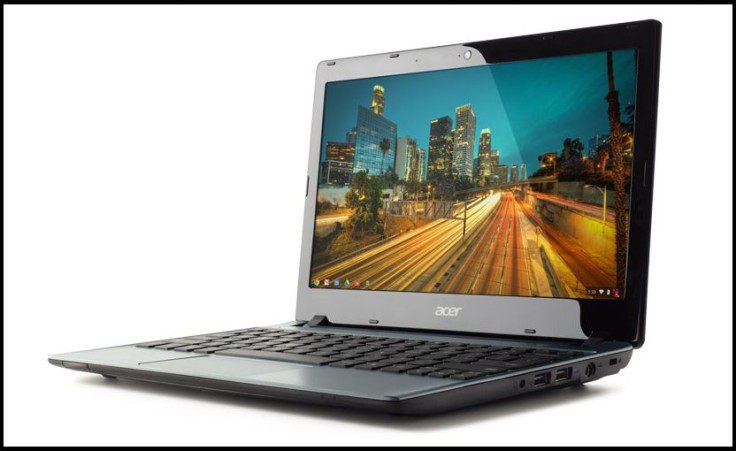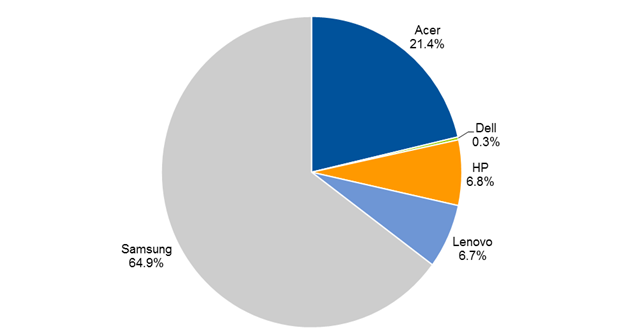Chromebook Sales Expected To Reach 5.2M Units In 2014, Could Nearly Triple By 2017

Sales of Chromebooks are projected to reach 5.2 million units in 2014 and that number could nearly triple over the next three years, according to a new report from Gartner. Chromebooks are laptops running Google Inc.’s (NASDAQ:GOOGL) Chrome OS as their operating system, and they mainly use the cloud for storage.
Of the 2.9 million Chromebooks sold in 2013, 82 percent were sold in North America, and by 2017, Chromebook sales are expected to hit 14.4 million units. According to Gartner, the soaring demand will mainly come from the U.S. education sector, which is estimated to have accounted for nearly 85 percent of Chromebook sales in 2013.
“Competition in the Chromebook market is intensifying as more vendors launch Chromebooks, with eight models in the market in 2014,” Isabelle Durand, a principal analyst at Gartner, said in a statement. “Now that the PC market is no longer growing strongly, vendors are searching for new business opportunities. They launched Chromebooks to revive interest in sub-$300 portable PCs once the netbook bubble had burst.”
In 2013, Samsung Electronics Co Ltd (KRX:005935) led the worldwide Chromebook market by selling 1.7 million units, especially dominating the education sector. Samsung, with a market share of 64.9 percent, was followed by Acer Incorporated (TPE:2353) with a 21.4 percent market share in 2013.

“So far, businesses have looked at Chromebooks, but not bought many,” Durand said. “By adopting Chromebooks and cloud computing, businesses can benefit; they can shift their focus from managing devices to managing something much more important — their data.”
Gartner expects Chromebooks to remain a niche market over the next five years. And, according to the report, to increase the user base, vendors will have to offer better cloud-oriented features, faster connectivity and memory access, as well as strong user support in the education, business and consumer segments.
© Copyright IBTimes 2025. All rights reserved.






















